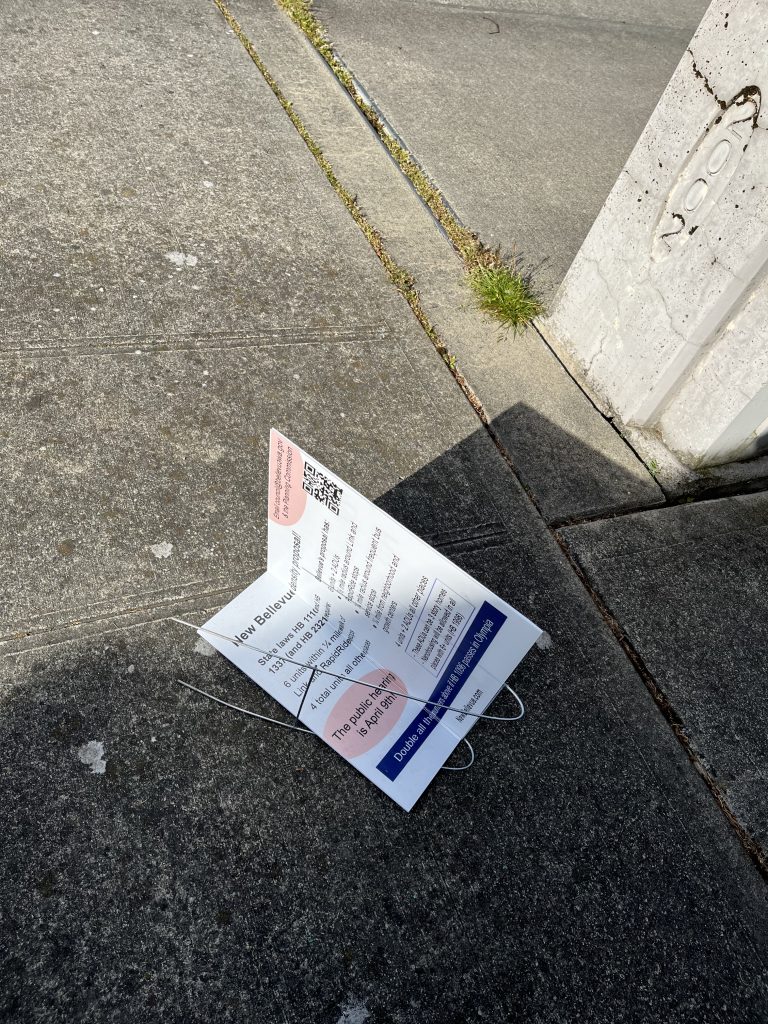In planning terms, setbacks tell you where on a lot you can build something and Floor Area Ratio (FAR) tells you how much you can build. The easy scenario is an FAR of 1.0, which translates to a two story building on half of the surface area of a lot or a three story building whose footprint is one third of the lot. Usually, there is also a maximum lot coverage percentage that prevents you from actually building on 50% of the lot; see my Cottages post for a discussion of this limit in our neighborhoods.
When we look around our neighborhoods, the most meaningful FAR is the 0.5 that theoretically limits house size. That might mean a two-story house whose footprint is 25% of the lot area. It’s not uncommon, though, for the newer homes to be much more than that through the magic of daylight basements, uncounted garage space, and the daylighting provision that uncaps FAR as long as you give the neighbors a little additional space along both side setbacks.
The intent with the middle housing change is to simultaneously tighten down on the FAR exemptions for single family homes (daylighting rules removed, etc, see letter from TJW on page 162 of written communications) while drastically increasing the FAR that is allowed for middle housing with more units on a site.
There was a last minute change released on April 3rd, in the week before the April 9th Public Hearing on Middle Housing. For lots under 10k square feet, the allowable FAR at each unit count of middle housing increased sharply. For example, the FAR for four units went from 0.7 to 1.0, an increase of 42%. The FAR for six units went from 0.9 to 1.5, an increase of 66%. Although April 3rd strike-draft is dated March 20th, it is not the same as the version that went out in March, and this did not give the community time to think about potential impacts before the hearing occurred.
You’ll also notice that when you cross the threshold from 9999 to 10,000 square feet, the amount of FAR you’re allotted decreases by about 44%. I mention this on page 27 of the written communications, and the situation is explained in more detail by K. G., who says it will open the city up to litigation (page 213). It seems very possible that this unfairness will be resolved in the same way that decreased sizes for single-family homes on lots over 10k sqft were – by simply increasing the amount of FAR given to the larger properties.
Lots on the smaller end of the scale also benefit proportionally more from a flat amount of non-FAR square footage that all lots are allowed to build; 2 x 1200 sqft ADUs* and up to 8 x 250 sqft parking/unheated storage. On the one hand, this means that the actual drop in buildable potential when going over the 10k threshold is only 31%, not 44% On the other hand, it means that on the smaller lots, we will run into feasibility challenges from the setbacks before we run out of FAR to build with.
The setbacks are determined by which zoning classification the parcel is in. For a lot in R-3.5, which will now be called SR-2, there are two tables with different setbacks for single family (20.20.010) vs. middle housing (20.20.538). In the middle housing scenario, the front yard setback is 10 feet, the rear yard setback is 15 feet, and the side setbacks are 5 feet each.
For a 10k sqft lot** that is 80 by 125 feet, the buildable area is 70 by 100 feet, or 7000 sqft. If you have three stories and it’s a solid chunk of building, that could be as much as 21,000 square feet. It is more than the 19,400 sqft of FAR plus bonus space, but then there is no room for walkways except around the edge in the side setbacks, no room for driveways, and the center of the building would be 35’ from the windows. An apartment building floorplate can certainly be that big, but middle housing may feel more dark when the adjacent structure is just ten feet across a sideyard, or there is a fence five feet away from the window.
15,000 sqft at 1.5 FAR + 2400 sqft ADU +2000 sqft parking/storage = 19,400 sqft
If that solid chunk of building is divided by two 5′ walkways into three 30 x 70′ duplexes (again, no driveways), that reduces the building size by 2100 sqft and means that the 18,900 sqft might only have enough room for 6 parking spots instead of 8.
Please keep in mind that scenarios depend on the lot shape too; if a lot with the same area is instead 85 by 117.6 feet, buildable area is 75 by 92.6 feet, or 6945 sqft.
If I have referenced your initials above and you would like me to use your full name instead, just let me know! Also, if there is a zoning classification/lot size combination you’re particularly interested in, please let me know and I can include it in the scenarios that I’ll be creating.
*there is the potential that ADUs could be larger than this if they are on a single level and receive approval for the plans.
** Technically, this is true for 9999 sqft lots, and exactly 10,000 sqft gets the lower FAR level.
